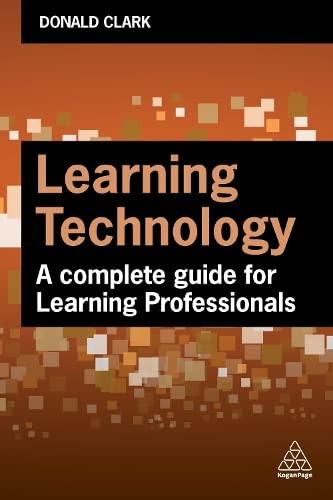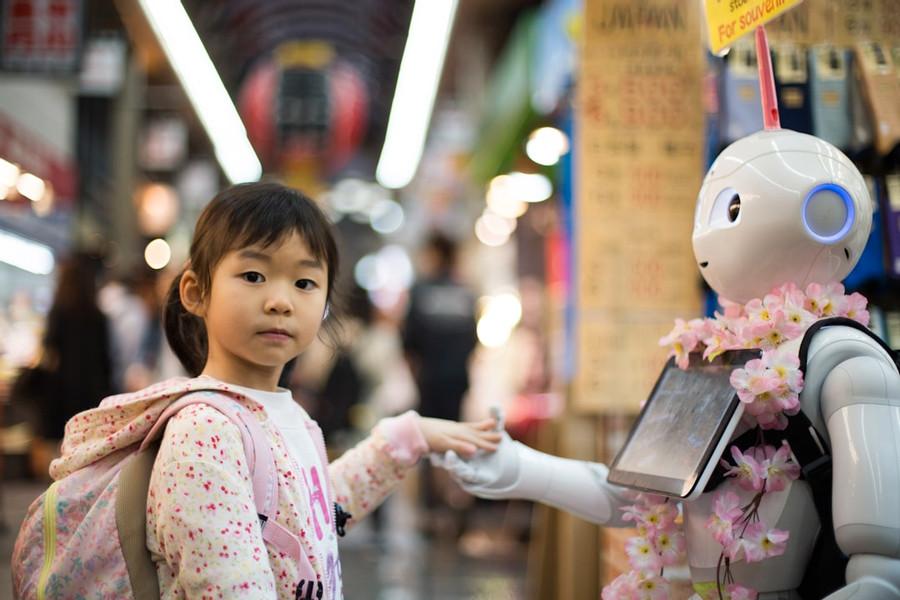Explore the World's Best Ideas
Join today and uncover 100+ curated journeys from 50+ topics. Unlock access to our mobile app with extensive features.
Learning Technology
It’s time to rethink the study of technology, exploring its impact on human history and culture
- Technological innovation shapes human evolution and learning pathways
- Screens create dynamic possibilities for readers that printed page lacks
- Educational institutions have long been slow to adopt learning technology
- Platforms enable organizations to personalize learning via AI and data
- Content creation is in flux as it undergoes a technology-driven transformation
- AI is fueled by human curiosity and has the potential to radically change learning
- The metaverse could create a new, immersive world of learning
58
700 reads
It’s time to rethink the study of technology, exploring its impact on human history and culture
In the broadest sense, technology refers to something “found or made,” separate from the human body, used with cognitive goals in mind and capable of changing the state of objects, organisms or even ourselves.
“Far from being a ‘black box’, something separate from us, learning technology has profoundly shaped our evolution, progress and culture – it will shape our future even more, as we increasingly depend on being smarter to survive.”
54
465 reads
Learning technology 10 characteristics
- It has cultural significance.
- It triggers exponential growth.
- It’s scalable.
- It results from combining multiple technologies (for example, the printing press was the combined result of metallic letters, binding, ink, paper and presses).
- It moves toward its obsolescence as new technologies emerge.
- It has verisimilitude (for example, people confuse it with real life).
- It extends cognition.
- It shapes the way people view the world.
- It moves society toward asynchronous, technology-based learning.
- It can positively and negatively impact humanity (for example, printing books requires felling trees).
58
408 reads
Technological innovation shapes human evolution and learning pathways
In France’s Chauvet Cave, you’ll find dangerous predators depicted on the walls, such as panthers and hyenas, which adults used to teach children about hunting. The cave art demonstrates simulated reality’s role in humanity’s learning journey.
“Without understanding evolution and prehistoric learning technologies, we cannot understand teaching and learning.”
54
339 reads
Evolutionary psychologist David Geary refers to learning that comes naturally to humans, such as learning your first words and recognizing faces, as “primary learning.” These forms of learning are part of the evolutionary heritage, as humans have evolved to learn these skills and thus they do not need to be actively learned. By contrast, “secondary learning” – less innate learning skills, such as writing – requires more active effort.
54
292 reads
Screens create dynamic possibilities for readers that the printed page lacks
Think of writing as the “big bang of learning technology,” as the advent of writing fueled cultural transmission and learning while empowering humans to transcend the fallibility of their memories.
As humanity has moved from slates to screens, the ways people engage with and perceive writing have evolved too, as one can now more easily download, store, search, alter and share written texts via the internet.
“As the physical manifestation of language, writing is of inestimable importance as a learning technology, enabling cultural capital to be captured, nurtured and carried into the future.”
53
277 reads
Educational institutions have long been slow to adopt learning technology
“We are beginning to see a battle between learning technology and institutional inertia.”
As most learners today have instant access to the internet, their learning landscape is becoming increasingly informal; they can learn in a continuous self-paced manner outside the classroom using platforms such as YouTube and Wikipedia.
55
256 reads
Platforms enable organizations to personalize learning via AI and data
The evolution of platforms, including virtual learning environments (VLE) and learning management systems (LMS), gives learning technology power and momentum by scaling learning experiences using the mega-platform of the internet.
With the advent of “smart adaptive learning platforms,” learners can now access unique learning experiences that vary depending on individual performance and personal data.
Adaptive platforms, such as Duolingo and CogBooks, leverage the power of AI and big data to chunk content into a structure that delivers it to learners when they’re ready to receive it.
57
234 reads
As smart platforms emerge, organizations will gain more control over how best to match learners and learning with organizational needs.
“Organizations almost always have ecosystems of technology for learning, but they also need enterprise-wide solutions that provide control and consistency – and this is being provided by smart platforms.”
53
216 reads
Content creation is in flux as it undergoes a technology-driven transformation
Think of content as “a means to an end” – it should affect a learner’s cognitive state, driving societal progress and learning.
Smart content is redefining content today, as organizations no longer need to store content in repositories using LMS storage and can instead leverage a more dynamic approach, pulling content – using intelligent software or AI – from multiple sources to use in a content strategy.
“Content is the captured and transmitted driver of history and progress.”
56
218 reads
AI is fueled by human curiosity and has the potential to radically change learning
AI is the most important new technology today and has irreversible impacts. It’s already ubiquitous in everyday contexts, like the workplace, smartphones and cars. In many ways, AI seems invisible, yet it will transform what, why, how and when people learn, as well as having a dramatic impact on the future of work.
“AI could be said to be the pinnacle of our technological achievements, performing astounding roles in almost every area of human endeavor.”
54
199 reads
AI is not a singular thing: It’s the combination of many things, including symbolic AI and advanced “transformers,” a type of natural language processing (NLP) that trains models using massive data repositories of text. The growing prevalence of AI correlates with a need to empower autonomous learners with digital literacy skills while transforming workplaces into learning cultures by embedding learning into workflows.
54
190 reads
The metaverse could create a new, immersive world of learning
“Learning, above all, will benefit all of those who have the imagination to see that its purpose is to change minds. We change minds by taking them somewhere else. That somewhere could be the metaverse.”
56
192 reads
Learning and training in the metaverse will be successful if the immersive experience mirrors real life, but metaverse technologies aren’t yet sophisticated enough to create a convincing, functional second world. For metaverse learning experiences to function most effectively, users should be able to experience “flow,” in that they forget they’re in a simulated world and view others’ avatars as having a sense of real presence.
54
177 reads
If actualized, learners could gain soft skills in the metaverse, using AI-powered avatars to strengthen skills such as managing teams, listening and interviewing. The metaverse could also provide a space where people create virtual prototypes in areas such as city planning and design. Although there are still many unknowns, the metaverse is poised to disrupt learning – no one working in education should ignore its potential.
55
194 reads
IDEAS CURATED BY
CURATOR'S NOTE
A Complete Guide for Learning Professionals
“
Discover Key Ideas from Books on Similar Topics
20 ideas
The Mamba Mentality
Kobe Bryant
16 ideas
The Mamba Mentality
Kobe Bryant
7 ideas
The AI Advantage
Thomas H. Davenport
Read & Learn
20x Faster
without
deepstash
with
deepstash
with
deepstash
Personalized microlearning
—
100+ Learning Journeys
—
Access to 200,000+ ideas
—
Access to the mobile app
—
Unlimited idea saving
—
—
Unlimited history
—
—
Unlimited listening to ideas
—
—
Downloading & offline access
—
—
Supercharge your mind with one idea per day
Enter your email and spend 1 minute every day to learn something new.
I agree to receive email updates

